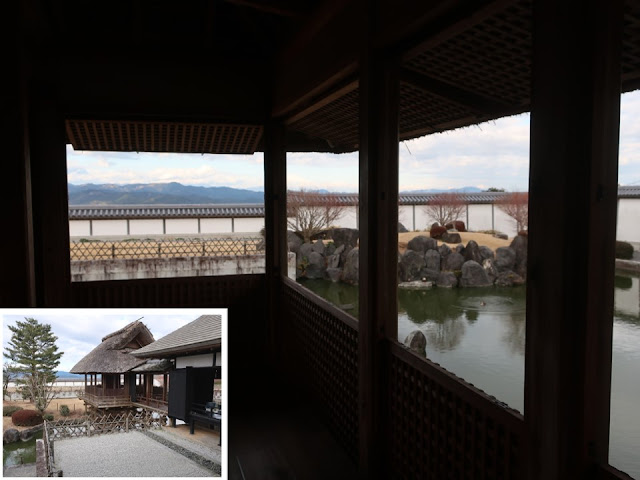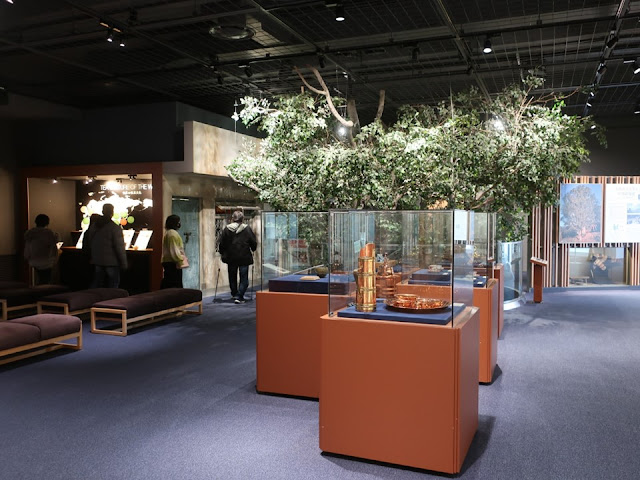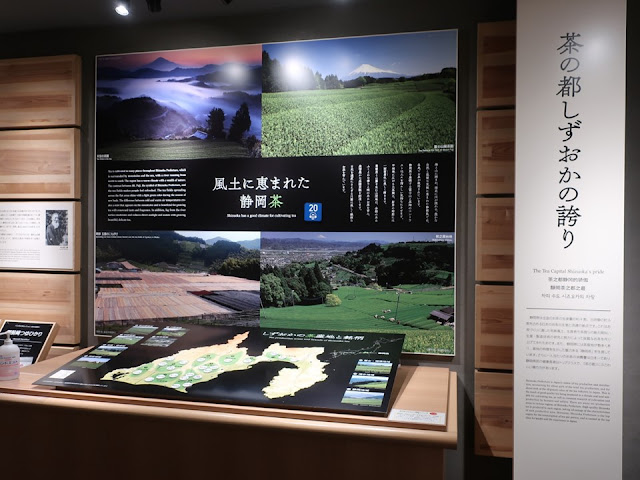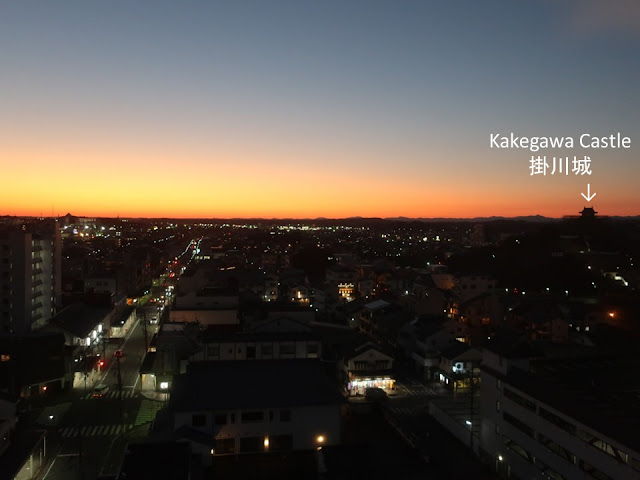Shizuoka Prefecture is the largest producer of tea in Japan. The museum is in the tea plantation. The museum would tell us all about tea. Tea time is definitely a fun time.
日本で一番多くの茶を作っている静岡県の茶所に博物館があります。茶のすべてが分かりそうな博物館です。お茶をいただく時間は、間違いなく楽しみですね。
The huge museum has a tea-ceremony room which was a filming location.
巨大な博物館には、ロケにも使われた茶室があります。
The tearoom is at the perfect location wherein we can see Mt. Fuji.
大井川越しに富士山を望める良い場所に茶室を作っています。
The museum is surrounded by the tea plantation. It’s pity that the tea leaves were not fresh green because I visited in February.
まわりは茶畑です。2月に訪問したので、鮮やかな緑ではなくて残念。
At the third floor of the museum, tea cultures in the world are exhibited. The birthplace of tea is “Yunnan Province, China”.
3階展示室では世界各地のお茶文化が紹介されています。発祥は中国の雲南省です。
At the second floor, the history and the culture of Japanese tea are exhibited.
2階に降りると日本のお茶の展示になります。
Our way of enjoying teatime is shown elaborately.
日本の茶の文化がとても丁寧に説明されています。
The title of the next section is “The tea capital Shizuoka’s pride”.
そして、静岡の茶
Chagusa farming method is very sustainable. People cut grass, dry them and use them as fertilizer.
草を刈って茶の肥料にする農法です。サステイナブルな方法です。
The theme is “Tea and life”. How to enjoy tea in our daily life; it is the essence. Tea is also a gift of a wedding ceremony and a funeral (exhibits on the right).
お茶と暮らし:暮らしの中でお茶をどう楽しむか。これぞ本質です。このためにお茶が作られています。日々の楽しみ(左)、結婚式や葬儀の時のお茶(右)が展示されています。
In an annual tea event in Gunma (on 24th of February), three kinds of tea leaves are mixed and four types of tea are made. Participants guess what kinds of tea are mixed; it’s a fun event.
その中に、「お茶講」という行事が紹介されています。三種のお茶を混ぜて四つのお茶を作り飲み当てる行事です。2月24日に群馬県中之条町で行われています。盛り上がると思いますね、きっと。
Ex-Toukaidou highway、旧東海道
I went west from the museum. I drove in the tea plantations, but the old highway is too narrow to recommend you to drive. I was lucky because there were no oncoming cars.
博物館から旧東海道を西に車で向かいました。周りは茶畑ですが、おすすめできない狭い道です。名高い小夜の中山を通過していきます。もう一度書きます。決しておすすめできないドライブコースです。対向車が来なくて良かった。
In Hisaka post town, there are old buildings along the ex-highway.
古い家々が残る日坂宿に着きました。
I finally reached Kakegawa and stayed there.
宿がある掛川についてホッと一息。
The grilled eel and rice (una-ju) were really delicious.
うなぎ、美味かったです。
Visited
in February, 2023
Official
website: https://tea-museum.jp/index_en.html
https://tea-museum.jp/ (in Japanese, many information), accessed in August,
2023
Previous post (museum in the same
prefecture): Shimada City Museum、島田市博物館
Next post (castle palace and city): Kakegawa castle and Toukaidou-highway、掛川城と東海道














Comments
Post a Comment